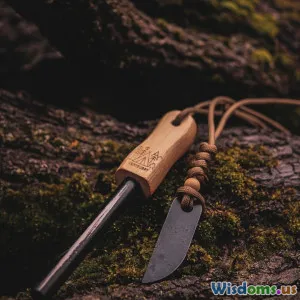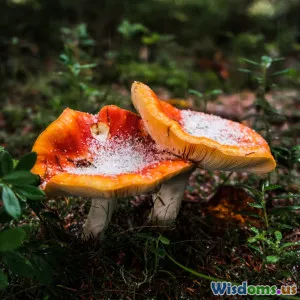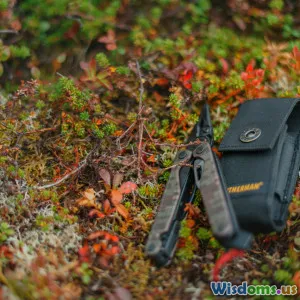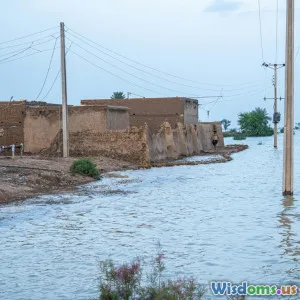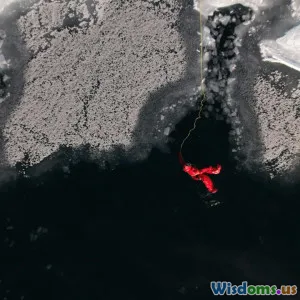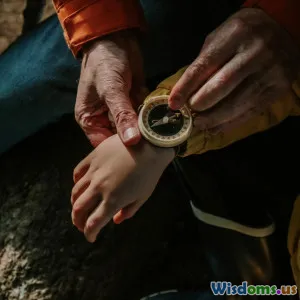
Navigating the Great Outdoors
7 min read Explore essential survival skills for adventurers and learn to navigate the wilderness confidently and safely. (0 Reviews)
Navigating the Great Outdoors
Navigating the great outdoors can be an exhilarating yet daunting experience. Whether you're embarking on a day hike or a multi-day backpacking trip, understanding essential survival skills is crucial for ensuring your safety and enjoyment. In this article, we will cover various aspects of outdoor navigation, from traditional methods like using a map and compass to modern technology such as GPS devices and smartphone applications.
Understanding Navigation Basics
Before stepping into the wilderness, it’s vital to grasp the foundational elements of navigation. This includes:
1. Map Reading
Maps are indispensable tools for any outdoor adventurer. Familiarize yourself with different types of maps, such as topographic and trail maps. Key skills include:
- Identifying Landmarks: Learn to recognize natural features like rivers, mountains, and valleys.
- Understanding Scales: Maps are drawn to scale, meaning distances on the map correspond to real-world distances. Knowing how to measure these can help you estimate travel time.
- Contour Lines: These lines indicate elevation changes. Understanding them helps you navigate complex terrains effectively.
2. Using a Compass
A compass is a timeless navigation tool that, when used correctly, can guide you through the wilderness. Key tips include:
- Declination: Adjust your compass for magnetic declination, which varies by location and affects accuracy.
- Bearing: Learn to take a bearing from your compass to find your direction of travel.
- Following a Bearing: Walk in a straight line toward your bearing while keeping your eye on a distant landmark.
3. Natural Navigation
Sometimes, the best navigation tools are the ones provided by nature. Consider:
- Sun Position: The sun rises in the east and sets in the west, providing a natural compass.
- Star Position: At night, the North Star can guide you if you’re in the Northern Hemisphere.
- Plant Growth Patterns: In some regions, moss grows predominantly on the north side of trees due to sunlight exposure.
Embracing Technology
While traditional methods are invaluable, modern technology can enhance your navigation capabilities:
1. GPS Devices
GPS (Global Positioning System) devices provide real-time location tracking, making it easier to navigate complex terrains. However, be mindful of:
- Battery Life: Always bring extra batteries or a portable charger, as GPS devices can drain quickly.
- Signal Loss: GPS relies on satellite signals, which can be obstructed in dense forests or deep canyons. Always back up your GPS navigation with traditional methods.
2. Smartphone Apps
Many apps are designed for outdoor navigation, offering features like:
- Offline Maps: Download maps for offline use, which can be a lifesaver in areas with poor reception.
- Trail Information: Access detailed trail guides, including difficulty levels and user reviews.
Weather Awareness
Understanding weather patterns is another vital survival skill. Here’s what to keep in mind:
1. Reading Weather Signs
- Cloud Types: Different cloud formations can indicate changing weather. For instance, dark, towering cumulonimbus clouds often herald storms.
- Wind Shifts: A sudden change in wind direction can signal an approaching weather front.
2. Using Weather Apps
Utilize weather apps to stay informed about conditions in your area. Look for features that provide:
- Real-Time Updates: Current weather conditions and forecasts.
- Alerts: Notifications for severe weather warnings.
Survival Skills
In case navigation goes awry, certain survival skills can be lifesaving:
1. Shelter Building
Learn to construct a shelter from natural materials. This can protect you from elements if you get stranded.
2. Fire Starting
Being able to start a fire can provide warmth, light, and a means to cook food. Familiarize yourself with different methods, such as using flint, bow drills, or waterproof matches.
3. Foraging and Finding Water
Know how to locate clean drinking water and edible plants. Carry a reliable guidebook or app for identifying safe sources.
Conclusion
Navigating the great outdoors is an enriching experience that connects you with nature and challenges your survival skills. By mastering essential navigation techniques, utilizing technology wisely, and preparing for the unexpected, you can ensure your adventures are safe and enjoyable. Remember, preparation is key to embracing the wilderness confidently. Happy exploring!
Rate the Post
User Reviews
Popular Posts













